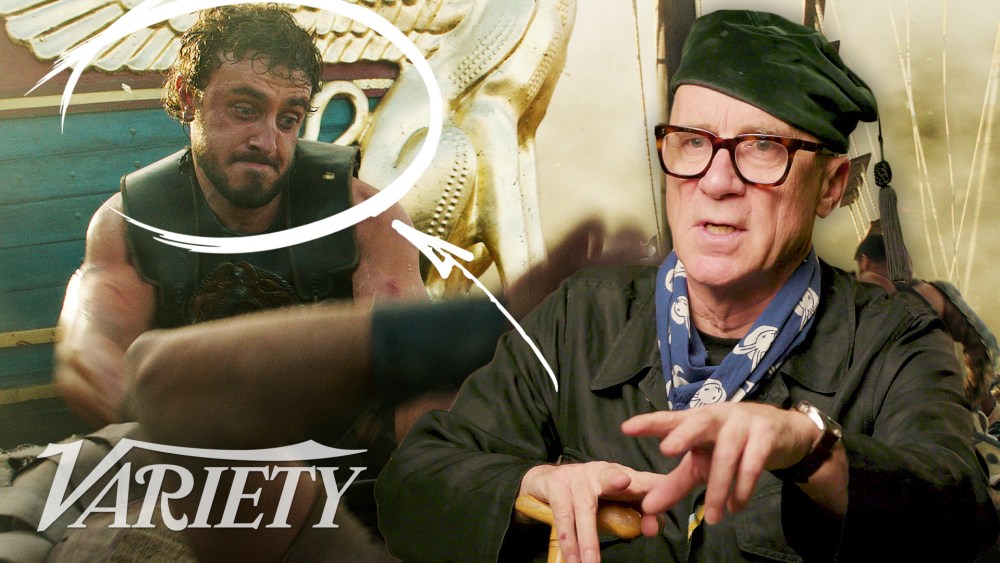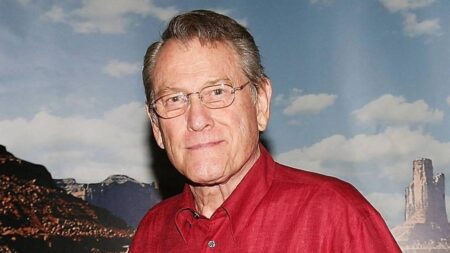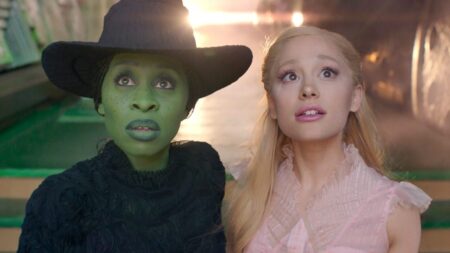“Gladiator II” picks up 16 years after the first film ends. When director Ridley Scott was conceiving the original, the approach was, “Build the sets, fight real tigers, shoot real arrows,” says cinematographer John Mathieson. This time around, things had moved forward and the Colosseum was at its height. But also there had been huge improvements in technology, and processes were now faster, easier and 3D printing technology had since evolved.
Scott went bigger on his second “Gladiator” outing with rhino showdowns, baboon fights and shark attacks during a mock naval battle.
Mathieson says that Scott really embraces CGI: “He loves it. He feels much more comfortable. He’s good at it. He composed these amazing scenes with his supervisors. Look at ‘Napoleon.’ That was a big difference for us.”
The shark battle might be one of the most entertaining sequences in the film. After Lucius’ (Paul Mescal) town comes under attack by Roman soldiers, he is captured as a prisoner. Eventually, he’s sold as a gladiator and becomes a leader. He battles with both the baboons and rhinos and conquers them both. “He’s getting a bit too powerful,” Mathieson explains. The emperors want to kill him off, so they devise a naval battle in the Colosseum.
The scene itself is colorful, with the boats all different colors and the senators in their togas watching from the royal box. Mathieson says, “It’s like a Vegas boxing match in the 1970s when the men are like peacocks and the girls were not quite as well-dressed as the men. It’s totally over the top.”
The sequence takes off as Lucius helms one of the boats and rams it onto another. It turns into a battle with gladiators and the Emperors’ guards falling into shark-infested water.
To set it up, Mathieson explains the sequence was actually shot twice. “We shot it dry on SPMTs (self-propelled modular transporters) which are multi-wheeled, multi-steering bases. It’s like putting a thing on a massive skateboard with lots of wheels on it and the guy walks along next to it and he’s got a joystick and he drives it.”
Explaining the process, Mathieson says when the dry sequence was shot, stuntmen had padding for the actors to fall onto. Once that was done, the production shot the sequence in Malta in a water tank. “It’s probably the largest tank in Europe, 300×400 feet, and it can be up to two meters deep,” Mathieson says.
The water was an emerald, green-blue color that created sinister shadows lurking underneath. “The dry part where most of the shooting was fairly quick. And story-wise, there were only a few shots in the water, but they took maybe twice as long, just to give you some idea how difficult water is to work in,” Mathieson says.
As for his camera set-up, Mathieson’s approach was to “stay back with the camera.” Since there was so much action going on he didn’t want to be tight. Rather, he wanted his framing to “feel like you’re in the action.”
Mathieson also knew Scott’s vision which was to shoot it as much as he could, all at once, and film from every angle. “They get all the extras, you put lots of cameras in and you position them around the arena because the boats are moving. Not all the cameras will be on all the time, but the boats will come to you, and the action will come to you.”
The advantage of shooting it all at once was the continuity. Says Mathieson, “The boat’s burning, the walls are being broken and guys are falling off. If you cut to another shot and the guy’s fallen off in the wide shot, and you cut to a close-up pull and he’s still there and he falls off, you can’t use that shot. Since everything’s running at the same time, when he falls off in the wide, he falls off in the close-up as well, so there’s a logic to it.”
His camera of choice was the Alexa Mini LF with a zoom lens. “With a zoom lens, you just go zoom. I’m afraid, much as I admire cinematographers who choose the right lens, that’s not what we’re doing here. You’ve got a lot of people who’ve been up since 2:30 in the morning. They don’t want to be seeing you say, ‘Oh, there’s a 35mm or maybe a 40mm,’ No. You’ve got to be ready. You’ve got to be quick. You’ve got to be on it. When that energy happens, or if something happens or breaks in mid-shot, you’ve got to have something to change to.”
Another factor in shooting the film almost 25 years later was utilizing how camera cranes had changed. “We didn’t have that. [Now], they’re telescopic, and they can reach 75 feet or more, but we used the short ones, so we’re mobile.”
Watch the video above.
Read the full article here








